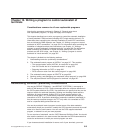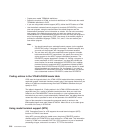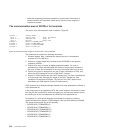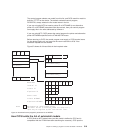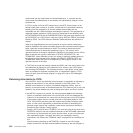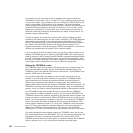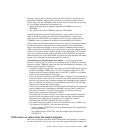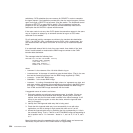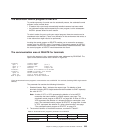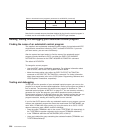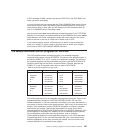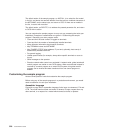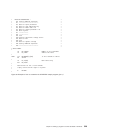As a general rule, all the models in the list passed to your program match the
VTAM data for the terminal. That is, a viable TCT entry usually results from the use
of any of the models. (The exception to this rule involves the VTAM RUSIZE; if this
value is incompatible, CICS issues an error message.) The default autoinstall
control program merely picks the first model in the list. However, this model may not
provide the attributes required in all cases. For instance, you do not want a 3270
display device definition for a 3270 printer. Your control program must be able to
select the model that provides the characteristics you require for this terminal—for
example, security characteristics.
To save on storage, you should try to minimize the number of different models
available to the control program, and the number of different TYPETERM definitions
referenced by those models. If you are migrating your definitions from DFHTCT
macros, look carefully at them and eliminate those that are unnecessarily different
from others. Use the QUERY function for all devices that can support it. For
bisynchronous devices, which do not support QUERY, one approach is to make the
definition as straightforward as possible, with no special features.
If you need special models for special cases, you can use a simple mapping of, for
example, NETNAME (generic or specific) to AUTINSTNAME. Your control program
could go through a table of special case NETNAMEs, choosing the specified model
for each. The default model would be used for any terminal not in the table. (Note
that the list of models presented to the control program is in alphabetical order with
one exception which is described in the notes to Table 50 on page 836.)
Setting the TERMINAL name
The TERMINAL name must be unique, and one through four characters long. For a
list of the acceptable characters, see the CICS Resource Definition Guide. The
TERMINAL name is the identifier CICS uses for the terminal. The NETNAME is the
identifier VTAM uses for the terminal.
You may have transactions that depend on the terminals from which they are
initiated, or to which they will be attached, having particular TERMINAL names.
Some transactions are restricted to particular terminals and others behave in
different ways, depending on the terminal. In some cases, the transaction may
gather statistics about terminal use, using the TERMINAL name as a reference. The
TERMINAL name may have meaning to those managing, using, or maintaining the
network: it may, for instance, denote geographical location or departmental function.
The NETNAME is really more suitable for these purposes than the TERMINAL
name, because it is eight characters in length. If you can use the NETNAME, the
TERMINAL name can be randomly assigned by the autoinstall control program, and
it does not matter if a terminal has a different TERMINAL name every time the user
logs on. The control program is required, in this case, only to make the TERMINAL
name unique within the system in which the terminal is to be autoinstalled. If the
control program attempts to install a TCT entry for a TERMINAL name that already
has a TCT entry, the installation is rejected, despite the fact that the terminal is
eligible and a suitable model has been found. (By contrast, if the NETNAME
already has a TCT entry, the terminal uses it and autoinstall can never be invoked.)
The default autoinstall control program creates the TERMINAL name from the last
four nonblank characters of the NETNAME. This may not satisfy the requirement for
uniqueness. One way of overcoming this problem is to use the EXEC CICS
INQUIRE command from the control program, to determine whether the TERMINAL
name is already in use. If it is, modify the last character and check again.
522 Customization Guide




